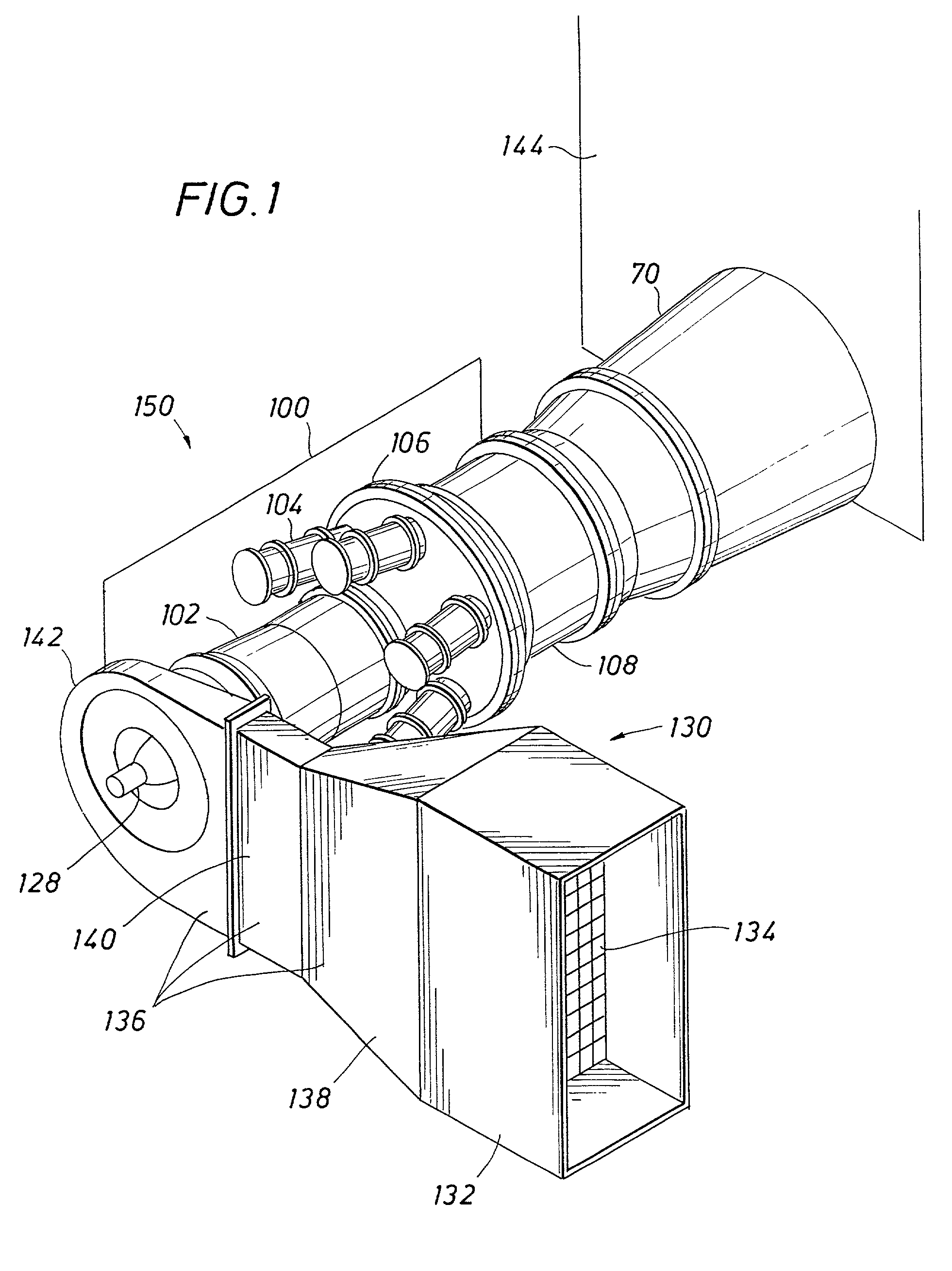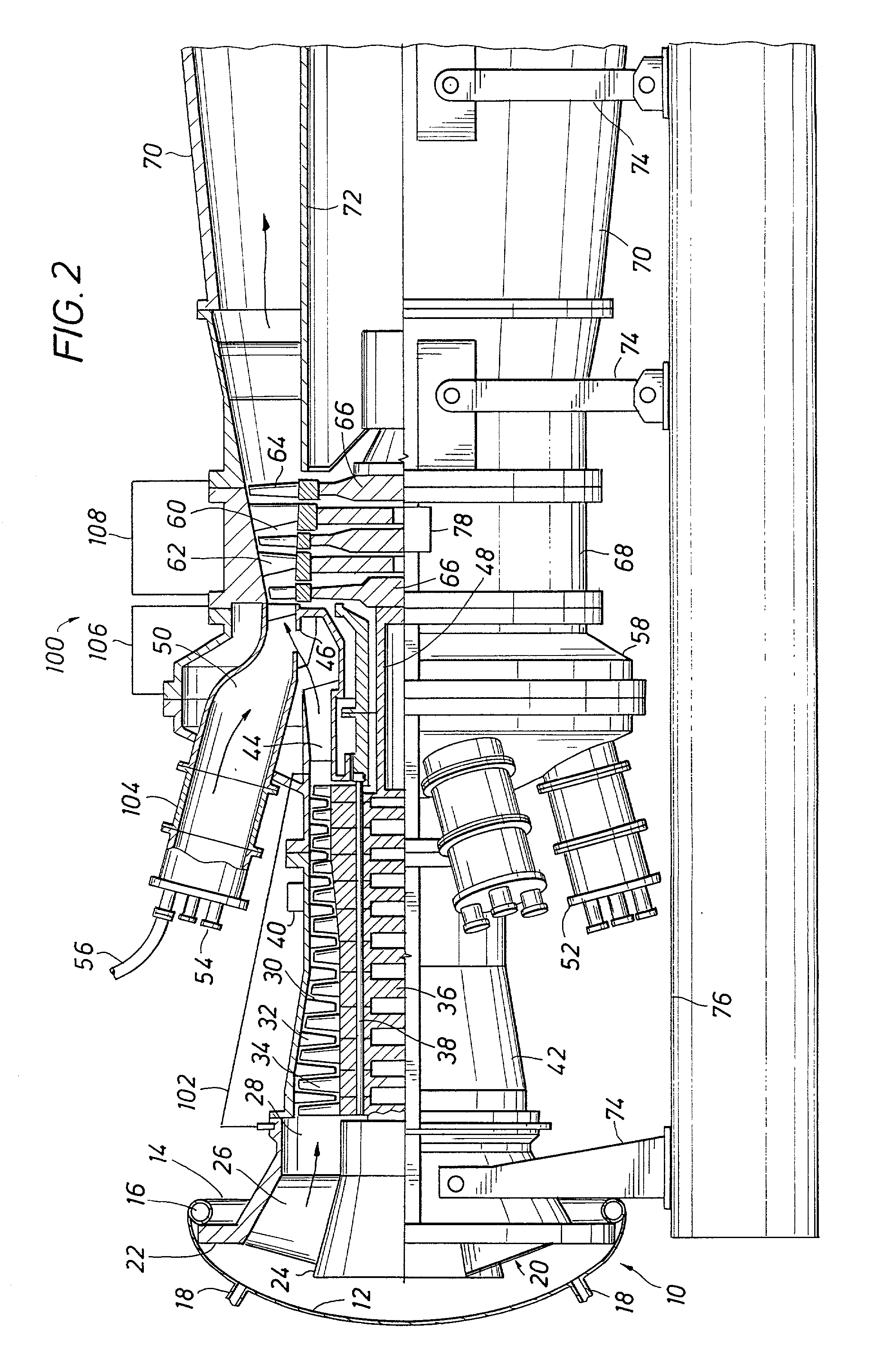Forced mist cleaning of combustion turbines
a combustion turbine and foam cleaning technology, applied in the direction of machines/engines, cleaning using liquids, lighting and heating apparatus, etc., to achieve the effect of minimizing the overall cleaning time, improving the effectiveness of most cleaning solutions, and maximum efficiency
- Summary
- Abstract
- Description
- Claims
- Application Information
AI Technical Summary
Benefits of technology
Problems solved by technology
Method used
Image
Examples
Embodiment Construction
[0038] The present invention provides improved methods for removing contaminants deposited on the blades and vanes of the compressor, combustion and turbine sections of a combustion turbine. The present invention provides improved, off-line methods for cleaning such turbines by using a manifold to pump a foamed cleaning solution through the air intake of the combustion turbine.
[0039] The present invention is readily understood by reference to the operation of an otherwise conventional, combustion turbine power generation facility such as illustrated in FIG. 1. FIG. 1 provides an overview of a combustion turbine power generation facility 150. Combustion turbine engine 100 is employed to generate electric power from the combustion of fuel with air. For simplicity, the associated electric generator is not illustrated in FIG. 1.
[0040] Depending on the installation, the electric generator can be driven from either the intake end of turbine engine 100 via shaft 128 or from the exhaust end...
PUM
| Property | Measurement | Unit |
|---|---|---|
| Angle | aaaaa | aaaaa |
| Angle | aaaaa | aaaaa |
| Temperature | aaaaa | aaaaa |
Abstract
Description
Claims
Application Information
 Login to View More
Login to View More - Generate Ideas
- Intellectual Property
- Life Sciences
- Materials
- Tech Scout
- Unparalleled Data Quality
- Higher Quality Content
- 60% Fewer Hallucinations
Browse by: Latest US Patents, China's latest patents, Technical Efficacy Thesaurus, Application Domain, Technology Topic, Popular Technical Reports.
© 2025 PatSnap. All rights reserved.Legal|Privacy policy|Modern Slavery Act Transparency Statement|Sitemap|About US| Contact US: help@patsnap.com



